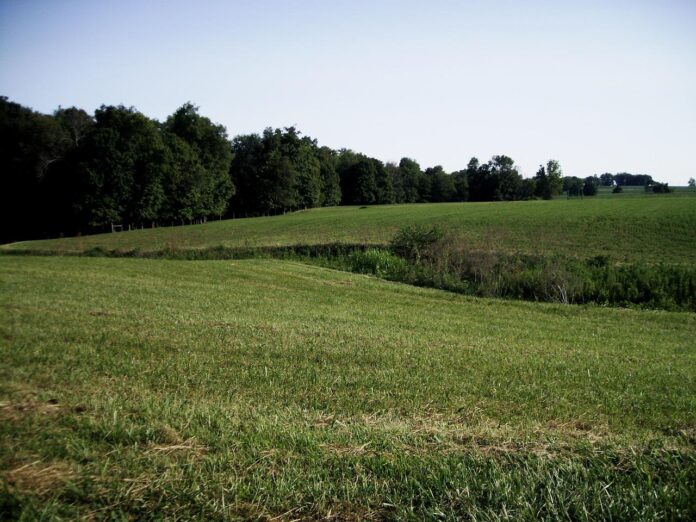Open any farm publication, print or digital, and one is likely to see articles related to carbon markets. There are several active companies in the agricultural sector recruiting farmers and landowners to enroll into carbon credit programs.
This proliferation of markets has been due to several factors, but in part it is largely due to the increasing amount of attention by world governments and corporations related to the magnitude of climate change impacts attributed to atmospheric greenhouse gases. A key point to be made is that these are voluntary carbon programs, and each farm and ranch is unique as to how it may use a grazing management system or other conservation programs to be eligible for these carbon markets.
Background
Agricultural lands and woodlands owners are being recruited by companies to offset carbon emissions associated with the burning of fossil fuels. Grasslands and trees use the exchange of carbon dioxide in the process of photosynthesis to provide us food, fiber and energy. How farmers and grazers manage these exchanges will potentially affect the amount of carbon stored in the soil and the amount of greenhouse gases that remain in the atmosphere.
Will carbon offsets solve the climate problem? There is much debate over this question. An offset allows the buyer of the credit to continue to emit carbon dioxide into the atmosphere by investing in a project that reduces emissions somewhere else. The most common offset is the planting of trees that absorb CO2 as they grow.
Many environmental groups and scientists argue that offsets without the substantial reductions of emissions will not result in a reduction of greenhouse gases quickly enough to prevent irreversible effects of climate change associated with a warmer atmosphere.
Who are the buyers of these credits? Large multi-national companies have pledged to become carbon neutral within the next couple of decades. To do this they invest in offset projects to account for direct company emissions — Scope 1 emissions — associated with the manufacturing of their products.
For many companies the indirect — Scope 3 emissions — from activities within their value chain that do not fall directly within the company’s ownership or control, such as transportation and distribution of goods and services are larger than their direct emissions. Investments to promote sustainable practices that reduce a company’s carbon footprint within the value chain is called a carbon insert.
Where do grazers fit in?
Opportunities will potentially present themselves to beef and dairy producers to receive monetary payments for grazing practices that sequester carbon in the soil and production practices that reduce the emissions of greenhouse gases, primarily carbon dioxide, nitrous oxide and methane.
Scientists estimate that grasslands contain 10-30% of the world’s organic carbon with the potential to store more with improved grazing practices. There are several grazing management practices that lend themselves not only to increasing soil carbon, but improvement of water quality, biodiversity of the farm, increased amounts of biomass available for grazing and improved soil health. Practices include rotational grazing, optimizing stocking rates, nitrogen management and incorporating forage species to reduce the need for synthetic fertilizers.
Carbon markets can be confusing and complex. It is advised that before signing up that you should do a thorough investigation of the requirements. The National Cattlemen’s Beef Association commissioned a report, “Voluntary Carbon Markets Applicable to Grazing Operations: Review and Considerations for Farmers and Ranchers” that does a thorough job of explaining voluntary carbon markets and poses questions that need to be asked and answered before enrollment.
Companies that are actively engaged in carbon sequestration and greenhouse gas reduction projects are numerous. In the agricultural sector there are many. Companies that focus on grazing management specifically are fewer in number. Most companies focused on grazing and livestock systems are currently in pilot programs. A limited number of projects are active and may not be available in all geographical areas. A few such companies are active in the Midwest including Ohio and Pennsylvania.
Ecosystems Services Market is a national ecosystem services market program that pays farmers and ranchers for quantified, verified, certified, and outcomes-based soil carbon, net greenhouse gases, water quality and water conservation credits generated from regenerative agricultural practices. ESMC is a non-profit, member-based organization and a combination of public and private companies and organizations.
Grassroots Carbon serves an intermediary between carbon credit buyers and ranchers that adopt regenerative grazing practices that increases the likelihood of increasing soil carbon. Grassroots provides technical assistance to the farmers and ranchers enrolled in their program.
The Soil and Water Outcomes Fund provides financial incentives directly to farmers who transition to on-farm conservation practices that yield positive environmental outcomes like carbon sequestration and water quality improvement. SWOF is currently enrolling Ohio farmers and ranchers.
The limited space available here does not allow for detailed explanation of the complexity of these markets as to what qualifies, how sequestered carbon is verified, length and terms of contracts, and how payment is made, but this is a good start. It is advised that before entering into a contract that a producer have an attorney review it.













